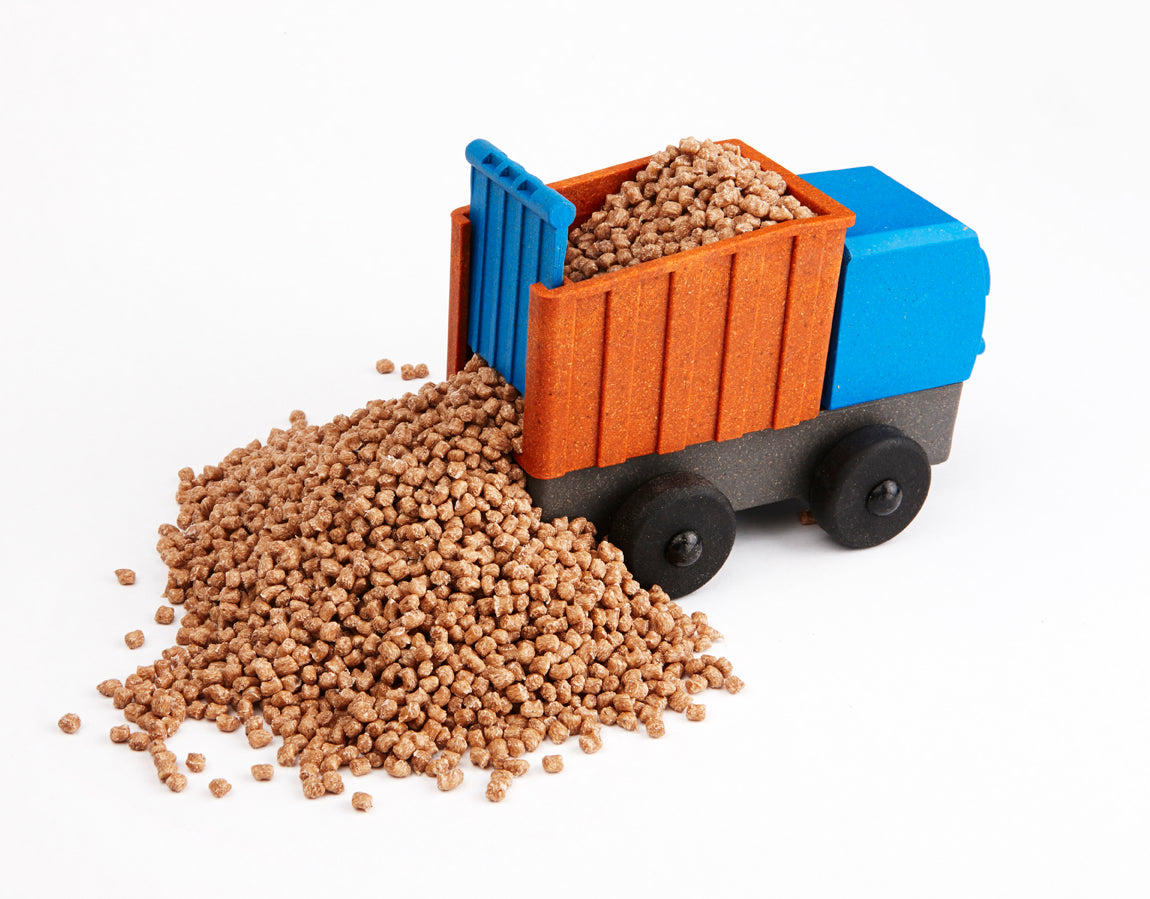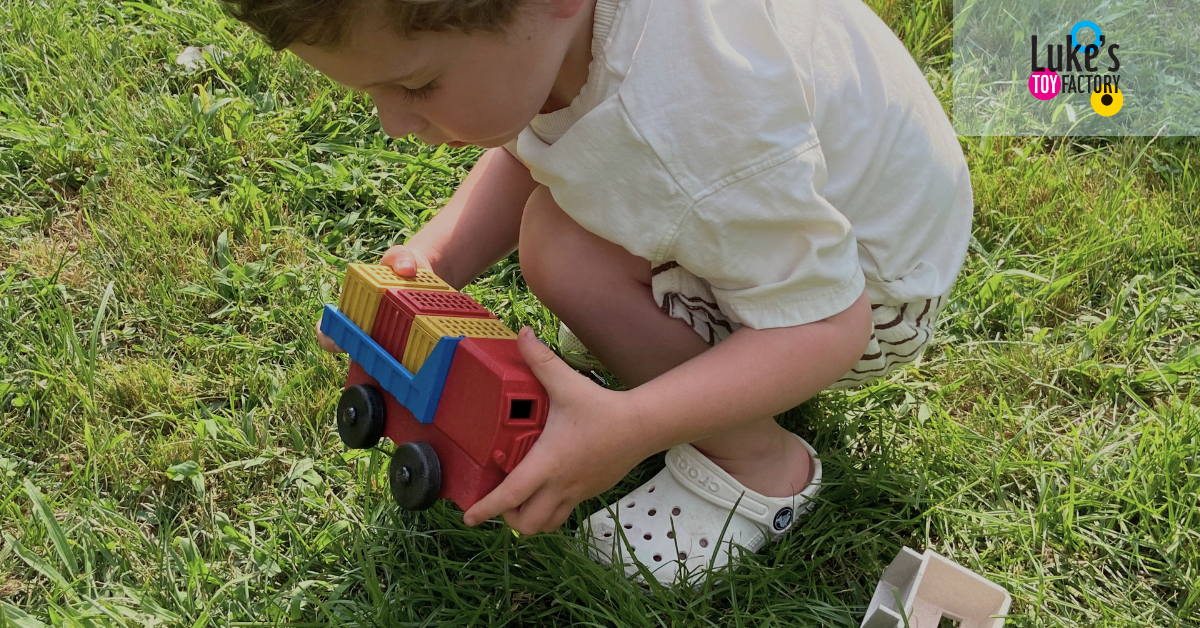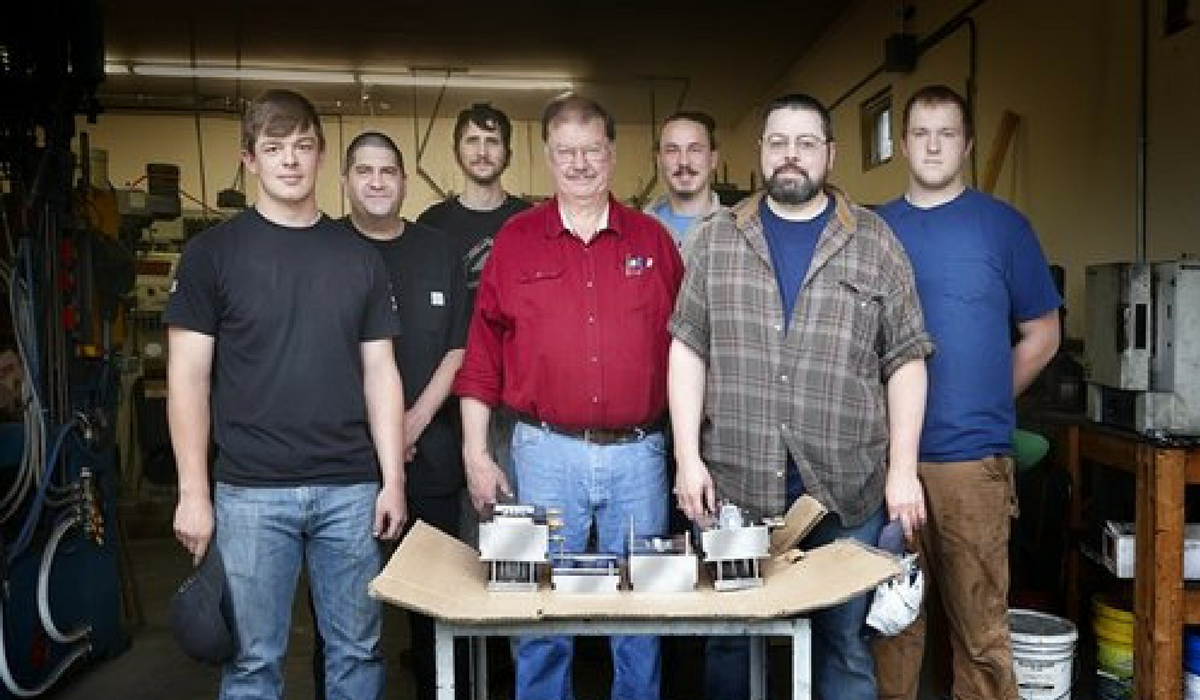Eco vs. Safe

One of the questions we sometimes get asked is “Is the plastic in your toys recycled?”
The short answer is no, and the reason must do with a balance between safety and sustainability.
The material we use for our toys is a composite of organic materials (maple sawdust from furniture factories) and plastic.
We use about 30% sawdust in our toys, which reduces the amount of plastic that would have been used by 30%. It also gives a material that would have been incinerated, or put in a landfill, a second life.
The plastic, on the other hand, is mostly virgin plastic, with about 10% recycled plastic mixed in. Why only 10%? That has to do with the physical properties of plastic.
There are two sources of recycled plastic: post-consumer and post-industrial.
As the name implies, post-consumer is what you see at the recycling bin. All kinds of colors get mixed together, some containers are clean but many have a residue of harmful chemicals. When you mix all those colors together you get grey or black. More importantly, there is no way to know if the harmful chemicals will find their way into your toy. For that reason, we do not use post-consumer recycled plastic. It can be done, however. Green Toys, for example, uses recycled milk bottles to make their toys, but that type of plastic won’t work for our toys.
The other alternative is post-industrial plastic. The advantage here is that you can know exactly what is in your plastic, since it comes from injection molding factories. When you make a plastic part, there is usually a “runner” left over, which is how the plastic gets into the mold. It gets cut off and discarded. This material can be collected and run through a machine that grinds it up into small pieces that can be melted and formed again. While it has only gone through two “heat events”, it is still relatively usable.
The problem is that you must have a stable supply of that material, it cannot have any additives or modifiers, such as BPA or phthalates, and it must have a “chain of custody”. That means it must be bagged and sealed at the factory, and someone must sign off that it hasn’t been tampered with. Then, the compounder who makes the wood plastic composite must combine the regrind plastic with the sawdust into a plastic pellet. This adds another “heat event”. By the time you finish, you have a plastic that is more likely to not do what you want. It can be brittle and easily broken, or warp when cooling. The other problem is that it can leave deposits on the molds, which then must be cleaned much more often, which is expensive.
All this would be fine if we were making other consumer products, but because we are a toy company, and our goal is to ensure safety, we cannot incorporate this type of plastic in our toys.
So, we have decided that when possible we will use a small amount of regrind from the injection molder that makes our parts. This regrind is from medical equipment that they make, so we know it’s safe, and it qualifies as waste because it can’t be used for medical parts, which must be virgin material. We keep the amount small so that we don’t change the properties of the underlying resin, which insures a robust, safe part. The bottom line is that safety always outweighs anything else.
All this is where we stand now, but in the future, we expect to be able to transition to more recycled and sustainable material. We have been testing alternate resins and materials, new kinds of fillers and plant based plastics. So far, we can’t say we have a winner, but the science is going very fast in that direction.
Stay tuned for advances!


